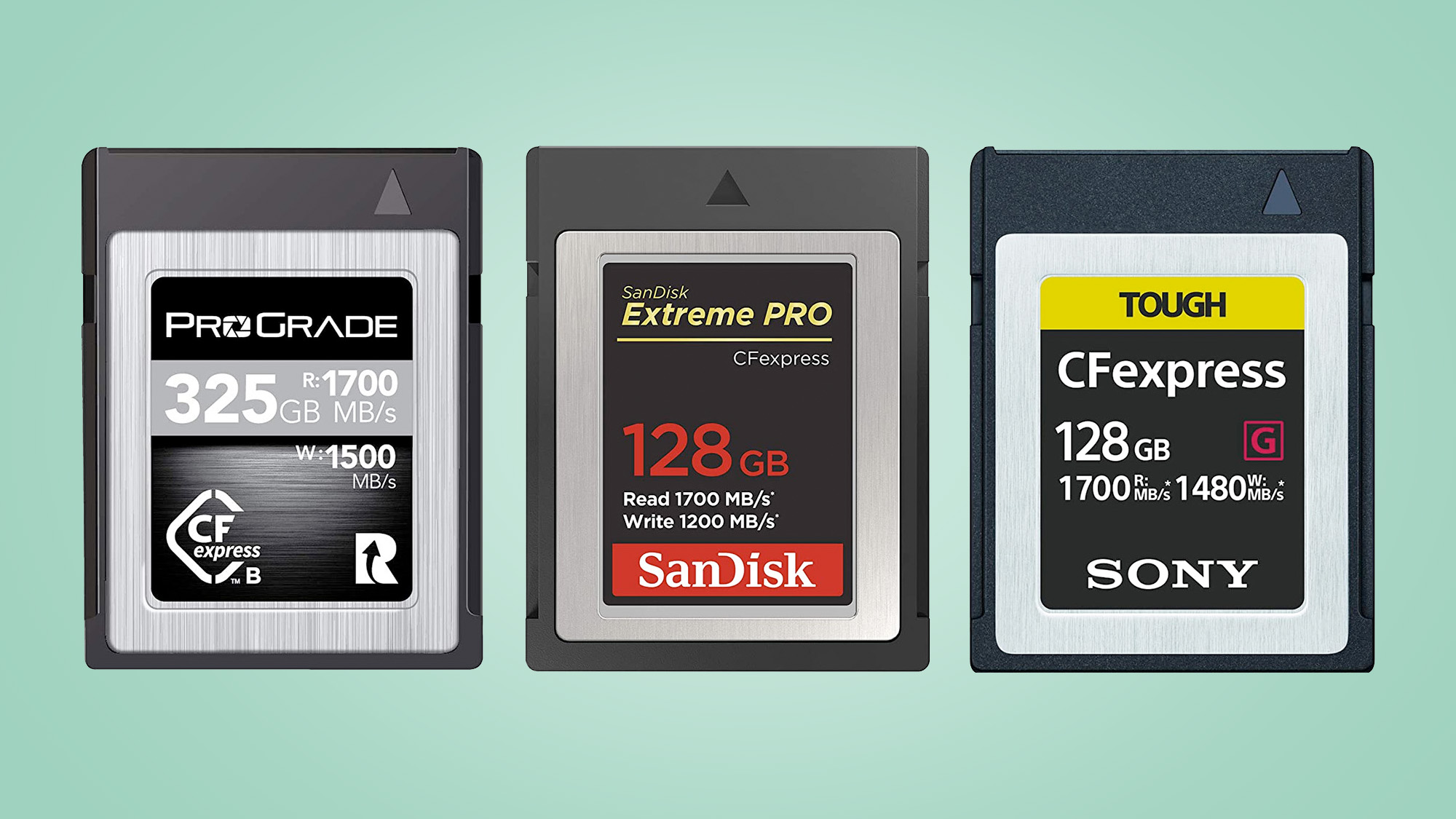The flash memory giant Lexar has announced that it's developing some of the first SD Express cards, a new format that will apparently triple the speeds of today's UHS-II cards.
The new cards, which will be joined by a new microSD Express equivalent for small devices like drones, are in development but won't arrive until 2022. But despite the delay, it's big news for a next-gen format battle that's been rumbling for a few years.
The new SD Express cards promise to boast a data transfer rates of almost 4GB/s and hit maximum read speeds of 985MB/s. What does that mean in reality? They'll be ideal for today's demanding mirrorless cameras, which shoot 8K video, continuous raw bursts, and 360-degree cameras.
- These are the best SD cards you can buy right now
- Or check out our guide to the best microSD cards for drones and cameras
- What is CFexpress? The new camera memory card format explained
Today's mirrorless cameras already have a next-gen card format called CFexpress, developed by the Compact Flash organization, which is available in three flavors (Types A, B and C). But with SD Express being the response from the SD Association, the organization that controls SD card standards, it seems that another memory card format war is about to kick off.
We have already seen Taiwanese storage manufacturer ADATA announce that it plans to launch SD Express memory cards in the second half of 2021, but the arrival of Lexar really bolsters the momentum of the new format. Its SD Express cards will apparently have capacities up to 512GB, while its microSD cards will top out at 256GB.
The only question now is what cameras and other devices will adopt the new SD Express format. CFexpress has a head-start over its rival format and recent cameras like the Sony A7S III have slots that accept both current UHS-II SD cards and the newer CFexpress Type A cards.
But there's a good chance we will see both new formats co-exist and appear in different types of camera and device, depending on who they're aimed at. Rather than a format war, that could mean a ceasefire that gives photographers and video makers a choice depending on their shooting needs.

Analysis: who will win?
One of the issues with CFexpress cards has been their considerable cost. Their prices have slowly come down, with sales events like Amazon's recent Prime Day bringing them closer to affordability, but they remain a lot pricier than current SD cards with comparable storage.
We don't yet know how much SD Express cards are going to cost, but it's possible that price will be one area they will look to undercut CFexpress. Both SD Express and CFexpress use similar technologies, with the former using the PCIe 4.0 and NVMe interfaces seen on solid-state drives and CFexpress currently using PCIe 3.0.
However, where they differ is in their physical design and the number of PCIe lanes offered by the various cards. CFexpress cards have tended to go for a more robust, metallic design, which has no doubt added to their high price tags, while SD Express will likely have more in common with today's mass-market SD cards.
This means one possible scenario is that SD Express will be adopted by hobbyist-level cameras, like the ones that currently support UHS-II SD cards, and the various forms of CFexpress will remain the choice of pro photographers, particularly when that format moves up to PCIe 4.0.
One slight issue for SD Express, though, is that it's only backwards compatible with UHS-I cards, rather than the newer UHS-II interface. That could mean that if you have a camera with an SD Express slot, you'd either be able to get lightning-fast speeds with new cards or much slower ones with your current cards.
Whatever happens, it's likely to take a while for hardware for catch up with the new SD Express format – and in the meantime, anyone buying a new, high-end mirrorless camera will likely be buying into CFexpress.
- Best micro SD for Switch: which Nintendo Switch memory card should you buy?
from TechRadar - All the latest technology news https://ift.tt/3h2WRwS